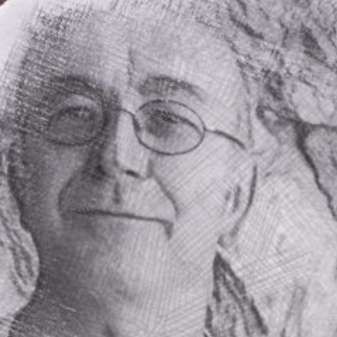When recession strikes, Stravinsky’s your man! Nothing is wasted and everything is convertible. The fact that his world and style had changed beyond recognition between beginning his opera, Le Chant du Rossignol in 1908 and finishing it in 1914 – three epoch-changing ballets later – did not seem to faze him. Nor did the deprivations of World War I, after which the work was transformed into a ballet score for smaller forces with the voice parts omitted.
The result, as demonstrated in the Philadelphia Orchestra's opening item, is a captivating account of the on/off relationship between a Chinese emperor and a high-maintainance nightingale, as told by Hans Andersen. The highly imaginative scoring - instantly recognisable as Stravinsky - demands impeccable timing, as splashes of colour are drawn from every corner of the orchestra. There is also great scope for soloists and flute, violin and trumpet, in particular, were beautifully exposed and warmly received. Also very impressive was the orchestra’s feeling for ensemble and blended sound, and the sense that they genuinely enjoy being and playing together. There was a fetching rapport between their orchestra and their outgoing conductor, Charles Dutoit, a man whose effortlessly energetic direction belies his biography’s reach.
Two contrasting works by Ravel featured in the programme. His 1911 orchestration of the previous year’s suite for piano-duet, Ma mère l’oye, closed the first half. Propelled by pentatonic percussion - underpinned by quartal harmony, the third movement, Laideronnette, impératrice des pagodes, (Ugly little girl, Empress of the Pagodas) colourfully echoed Stravinsky’s earlier Chinoiserie. The movement which, for me, felt truly magical, however, was the closing one, Le jardin féerique (The enchanted garden). Sarabande-like in rhythm, it floated – at least until its climactic conclusion - so lightly and spaciously that it seemed almost without metre. Contrastingly, La Valse, which closed the concert, was all about addiction to the beat – dizzying and flexible, it’s true – but nevertheless insistent in its grip. It seems to be one of history’s irony’s that many young people today, certainly in Celtic corners of the UK, seem more able to relate to say, the Gigue than the more recent Waltz. However, this performance of La Valse succeeded in connecting us to an age when the Waltz was The Locomotion of its day. It certainly caused a commotion in the Usher Hall.
A waltz – transfigured to the point of the macabre in the view of some commentators – occupies the central movement of Rachmaninov’s three-movement final work, Symphonic Dances Op. 45. Much has been written about the composer’s haunting by the Dies Irae theme, which is jauntily quoted at one point, in the third movement - as is Blagosloven yesi, Gospodi (Blessed be the Lord) from his Vespers of 1915. However, what struck me most about this work was its opening vigour and, odd as it may seem to say it, how American it sounded – nature versus nurture in action. In addition to the joyously played brass descending triad, which develops into a nine-note, descending theme, there is later what amounts to a three-note, descending blues riff in the cellos. This section of the work was played with great gusto and seemed, more than anything in the evening, to animate Charles Dutoit. The work reaches a rhythmically explosive conclusion, driven by impressive snare-drum work. The percussion section as a whole received a resounding cheer when invited to take a bow. I later discovered that this work was dedicated to the Philadelphia Orchestra – apparently Rachmaninov’s favourite and, after this outstanding performance, perhaps that of many of the 2,000 jubilant members of the audience. This was an outstanding concert by a great orchestra!
Reading the programme note I was interested to note that, not only has the Philadelphia Orchestra had only seven musical directors in 111 years, but that it has an impressive list of firsts to its name: first to visit China (1973) and Vietnam (1999); first to record the soundtrack of a feature film (1937); first to broadcast on TV (1948) and live on the Internet (1997). Speculation abounds concerning the financial future of the Philadelphia Orchestra. It would be a very sad thing if the sustained quality and innovation of this ambassadorial ensemble were allowed to perish.


